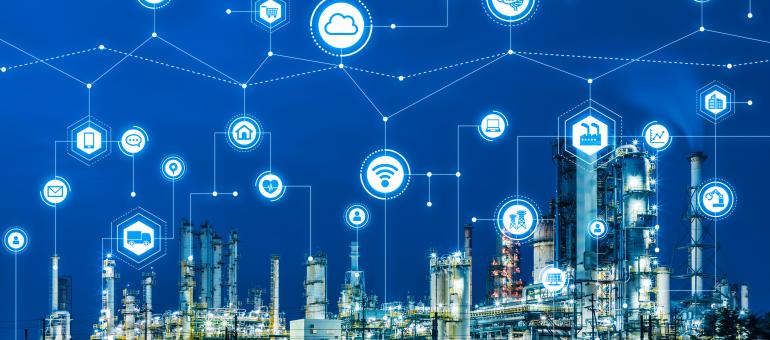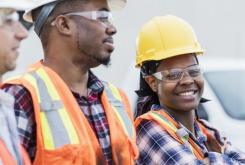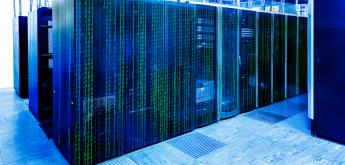Water Technology Q&A: Industry 5.0 with Bernie Anger

Chief digital officer for Veolia Water Technologies & Solutions brings us up to speed on what Industry 5.0 is, how it evolves from Industry 4.0, what it means for industry and how companies can begin to prepare.
The next industrial revolution is known as Industry 5.0. Water Technology recently caught up with Bernie Anger, Chief Digital Officer for Veolia Water Technologies & Solutions, to bring us up to speed on what Industry 5.0 is, how it evolves from Industry 4.0, what it means for industry and how companies can begin to prepare.
What exactly is Industry 5.0?
Given it is still a relatively new concept, there are different versions of what Industry 5.0 means. I like aligning with the definition from the European Commission, which says that Industry 5.0 provides a vision of industry that aims beyond growth and profit as the sole goals and emphasizes the role of industry to society. That is to say that industry can play a big part in providing solutions to our most pressing challenges. So, you could say that Industry 5.0 is a call to action — it strives for a greater purpose.
How is it different from Industry 4.0?
In a broad sense, Industry 4.0 brought together advances in industrial automation and web technologies to drive productivity. In a plant, this means the ability to link an automated process with cloud-type technologies and use data analytics to achieve gains in productivity. At Veolia we have been adopters of Industry 4.0 concepts in many of our offerings, ranging from our connected APM platform, Insight, to our various connected control solutions such as TrueSense, and our analytics portfolio that includes tools like Empower. Now, what Industry 5.0 proposes is to make use of that same technology and infrastructure to also help address the global issues we face, like water stress.
How can industrial companies get started on an Industry 5.0 approach?
First off, Industry 5.0 should be viewed as a journey. And different companies are at different stages along this journey. For those getting started, one of the first steps they can take is to understand their industrial operations in terms of their use of natural resources and potential sources of environmental stress (water, carbon, etc.). This foundation of data can then inform goal setting, which helps prioritize investments in cloud-connected automation, or broader equipment infrastructure. Deploying sustainability-centric actionable dashboards at multiple levels within the Organization early in the process can help coalesce the organization around common sustainability objectives. Water performance is key in many industries and our area of expertise as a company, so we keep accelerating our ability to deliver Industry 5.0 solutions to assist customers on their journey.
Can you provide an example?
I like thinking in terms of frameworks, so when we look at water through a digital lens we speak in terms of transparency, net-positivity, and resiliency.
Let’s use water as an example to illustrate what we mean by transparency. A company could look at every water-related flow — every input and output — to determine a water balance. Applying connected instrumentation will result in a higher level of precision with the calculation. Next, the company can use their water balance to help choose the best opportunities to intervene in the plant with water saving measures. But the real progress begins when a plant starts collecting data automatically and combines it with algorithms to optimize each process and how each asset operates. You can see that the approach begins at a macro level and becomes increasingly focused.
It’s important to point out that beginning an Industry 5.0 journey does not always mean that a company will have to invest a significant amount of capital in new digital capabilities. In fact, many customers may already have some of the data and the automation infrastructure for moving ahead. As a partner, Veolia can connect the different sources of data that customers have. And obviously, we have the ability to compliment it with instrumentation and analytics.
What about for companies that are further along with their sustainability commitments?
There is a heightened degree of awareness among industry about the importance of environmental stewardship and water conservation and many organizations already have sustainability programs in place. We work with many of them. So, in these cases, what Industry 5.0 really provides is a tool that these companies can use to accelerate their sustainability performance.
People often wonder how Industry 4.0 technologies are useful here. They might ask, “Why would I use digital tools in my water footprint?” The answer is that, fundamentally, it gives you the right information to go make the right set of decisions. And further, it helps you automate aspects of the work — freeing you to tackle the next layer of problems.
Is the ROI there?
I love this question. The answer is best determined by each customer and their situation, based on their context. Regardless of that, we want to encourage customers, at a minimum, to embrace a holistic approach when calculating their true cost of water. With rising energy costs, efficient (which often also means more sustainable) use enabled by the type of technologies we’ve been discussing can have an attractive payback.
How can solution providers like Veolia help companies move their Industry 5.0 adoption forward?
Domain expertise matters. That’s where organizations like us can make a huge difference. We combine decades of water industry expertise with digital leadership. And more, we have the capabilities to use analytics to transform data into actionable intelligence. We feel that it’s our responsibility to be at the center of this transformation that Industry 5.0 is driving.
I can say that already we are at work at sites around the world, collaborating with clients to benchmark and assess their performance for the purpose of identifying actions they can take to progress. We have a meaningful, connected footprint in tough industrial environments, which can be a huge accelerator for customers. What gets us enthused is that we can make a difference by helping our clients optimize the performance of critical assets so they can reach their sustainability goals faster.
Note: The original article ran in Water Technology Online on March 17th, 2023.







